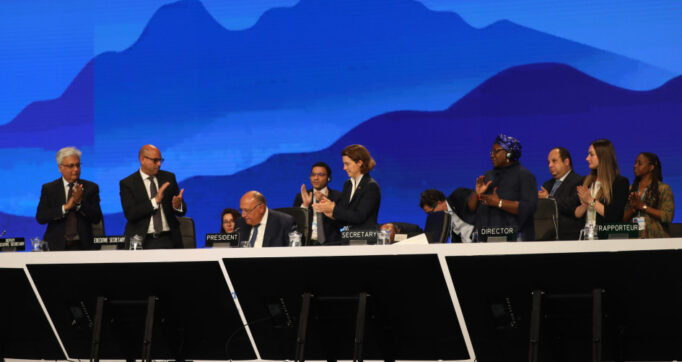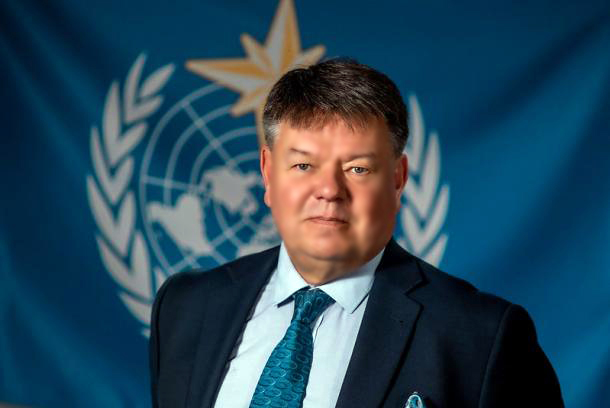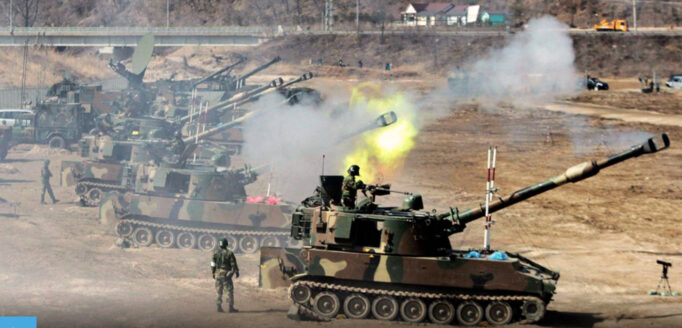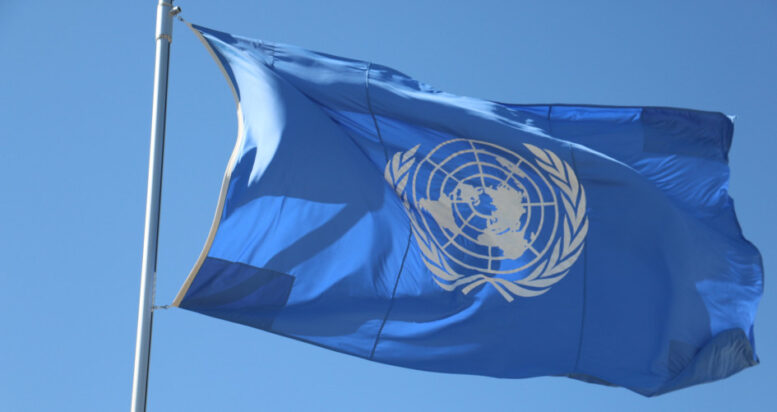The 27th Conference of Parties (COP27) on Climate Change took place on November 6-20 in Sharm el-Sheikh, Egypt. The theme of the conference was “Delivering for People and the Planet.” COP27 President, Egypt Foreign Affairs Minister Sameh Shoukry, presided over the conference administered by the UN Framework Convention on Climate Change (UNFCCC) Executive Secretary Simon Steill. The 193 member-countries and numerous NGOs worldwide sent over 35,000 representatives. The principal objective of COP27 is to “accelerate global efforts to confront the climate crisis.” Addressing this extremely difficult situation entails mitigation, adaptation, and finding means to implement the action plans.

COP27 is where the Loss and Damage Fund was set up. Photo Credit: Kiara Worth at UNFCCC.
One notable result of the conference is the “Loss and Damage Fund” which was set up to assist the most vulnerable nations with climate disasters –typhoons, earthquakes, floods, wildfires, etc. The recent destructive floods in Pakistan, wildfires in many areas, and disastrous storms elsewhere facilitated this initiative. While the mechanics on how to run the fund are yet to be established, this outcome is considered historic by some observers.
Another item which was passed upon was a call on the members to collectively invest at least $4 trillion per year to develop and harness renewable energy sources to achieve a “net zero” greenhouse gases (GHG) emission by 2050. This will involve transformation of the financial system with active participation of governments, central banks, commercial banks and other financial institutions.
The conferees also agreed to reduce by 50% emissions of GHG by the year 2030 to keep the global warming increase to 1.5 degrees Celsius above the pre-industrial levels. The Intergovernmental Panel on Climate Change (IPCC), based on its studies, reported that beyond 1.5 degrees Celsius increase, extreme droughts and other calamities will adversely affect the global food system. The conference proceedings could have triggered the resumption of formal climate change talks between the U.S. and China on the issue of GHG emissions.
On the other hand, the conference failed to reach an agreement to phase out fossil fuel use as the big GHG emitting countries refused to do so. Some accounts point out that there was an increase of lobbyists from oil producing countries and the big consumers of fossil fuel. In 2021, the Glasgow summit (COP26) called upon the phasedown of “unabated” coal power and the phaseout of “inefficient fossil fuel subsidies.” While only 62 of 193 member-states announced they have plans to mitigate and adapt to climate change, only 24 have submitted this year. The 62 members comprise 83% of the world’s GDP, and consume 69% of power generated by fossil fuel and other sources.
The threat of global warming, contrary to some critics, is real. Since 1988 the UN Environment Program (UNDP) and the World Meteorological Organization (WMO) have prepared a number of Assessment Reports on Climate Change. The UN created the IPCC in 1988, through Resolution 43/53 of the UN General Assembly’s 70th plenary meeting, to provide policy makers with periodic scientific assessments, and the implications including potential risks of climate change. The body also proposes mitigation and adaptation options.
In 1992-1993, the UN Framework Convention on Climate Change was adopted. In 1994, 50 member-states ratified the Convention and the UN established the Secretariat in Bonn, Germany. The first COP took place in Berlin in 1995, and thereafter an annual global conference is held in host nations worldwide. The COPs that came out with very significant results are the 1997 Kyoto Protocol (COP3) and the 2015 Paris Agreement (COP21). The former binds the developed member-nations to emission reduction targets; while the latter set the target for global temperature increase of below 2 degrees Celsius by the end of the century, called for intensified actions, and more investments for a sustainable low carbon future.

Professor Petteri Taalas has been the Secretary-General of WMO since 1-January-2016 as appointed by the World Meteorological Congress. He is now serving his second term (Jan 2020-Dec 2023). Photo Credit: WMO.
As of late, WMO Secretary-General Petteri Taalas revealed that from 1990 to 2021, the aggregate amount of carbon dioxide (CO2) emissions increased by 50%. Reckoning from the pre-industrial period, the increases of CO2 is 149%, methane by 268%, and nitrous oxide by 124%. The CO2 comes from fossil fuels, methane (CH4) from the wetlands and rice paddies, and nitrous oxide (N2O) from natural sources, the ocean, and industrial processes. About 8% of total GHG emission originates from food waste.

Ukraine war threatens climate targets. Photo Credit: DW Global Media Forum.
Apart from the usual sources of GHG emissions, the war in Ukraine also contributes to the climate crisis. Global inflation has affected most countries as prices of energy, food commodities, and transportation are above normal projections. Large quantities of weapons systems and ordnance spent in the ongoing shooting war produce GHGs, and the threat of a nuclear winter continues to hang in the horizon.
The gargantuan global effort to face the climate change crisis brings to mind the adage, “Think Globally, Act Locally,” which claimed to have been started in 1915 by Patrick Geddes, a Scottish planner and conservationist. Geddes contends that human development must take into account the local culture, identity, economy, and create an indirect harmony with the surrounding environment. The environmentalist groups in the 1970s coined the exact phrase and since then other organizations applied the adage in many of their objectives, structures, and processes.
Many interest groups agree with the holistic approach to prevent climate change by encouraging people and communities to think globally and act locally. However, there are some issues associated with this. For one, there is a rift between priorities of the developed and developing countries regarding environmental objectives and preferences. Secondly, any climate action has a corresponding reaction, i.e., lesser demand for some GHG emitting source such as fossil fuels while a higher demand for various other alternative fuels. In addition, environmentally focused initiatives may not be compatible with the goal of combatting climate change.
While local leaders can, on their own, formulate and implement environmental conscious solutions that would contribute to arresting GHG emissions, they must harmonize their actions by considering their possible consequences. For example, the manufacturing of electric vehicles and non-plastics to replace vehicles with internal combustion engines and plastic materials with cotton, paper, cork, or other wood products may require additional energy produced by GHG emitting power sources. I recall many years ago as Board Chair of the AFP Commissary and Exchange Service, a decision was made to disallow the use of plastic bags in the commissary stores, and instead use reusable bags and empty carton boxes. However, those recyclables were costlier, inferring that more energy was spent. Nevertheless, in the long run, the benefits of recyclables have proven to outweigh the negative consequences.
Overall, the results of COP27 – the creation of a “Loss and Damage Fund,” commitment to invest in the development and operation of renewable energy sources, and submission of mitigation and adaptation reports by some leading member-states, can be viewed positively. There are more actions to do, and the sooner they are implemented, the better for Mother Earth’s human race, including flora and fauna.
As we join the worldwide celebration of the birthday of our Lord Jesus Christ, let us not forget to take good care of Mother Earth and gift her with clean air, land, sea, and sky as her responsible custodians. These are the best gifts we can ever give back to Mother Earth for the next generations to come.
